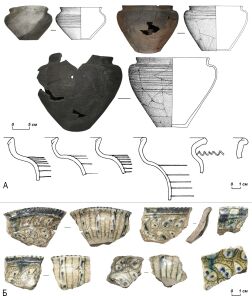 Asya V. Engovatova1,*, Alexander E. Cherkinsky2,**, Vladimir Yu. Koval1,***, Alexey Yu. Sergeev1,****, Elena Yu. Lebedeva1,*****, Maria B. Mednikova1,******
Asya V. Engovatova1,*, Alexander E. Cherkinsky2,**, Vladimir Yu. Koval1,***, Alexey Yu. Sergeev1,****, Elena Yu. Lebedeva1,*****, Maria B. Mednikova1,******
1Institute of Archaeology RAS, Moscow, Russia
2Center for Applied Isotope Studies at the University of Georgia, USA
*E-mail: engov@mail.ru
**E-mail: acherkin@uga.edu
***E-mail: kovaloka@mail.ru
****E-mail: alexarchbot@yandex.ru
*****E-mail: elena.archbot@mail.ru
******E-mail: medma_pa@mail.ru
Keywords: archaeology, the Moscow Kremlin, science research methods, radiocarbon dating, isotope analysis (nitrogen, carbon, strontium), palaeobotany
The article examines the possibilities of natural science research in archaeology based on the case of a closed archaeological complex (structure 32) revealed during the 207 excavations in the Taynitsky Garden of the Moscow Kremlin. The complex was formed at a time as a result of a fire and contains the remains of three people. Initially, based on the analysis of pottery material, it was dated to the first half of the 15th century. Studies of human bones carried out at the Center for Isotope Research at the University of Georgia made it possible to state that the structure perished between 1275 and 1395, probably as a result of the destruction of Moscow by the Tokhtamysh troops in August 1382. The use of science research methods made it possible to obtain additional information about the diet and the social status of individuals; the likelihood of their residence in Moscow during the last years of their life was analyzed.
DOI: 10.31857/S086960630011982-9







